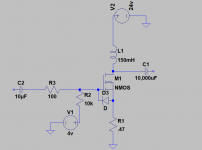I have not tested or played with any new interesting mosfets for a while now.
I would recommend the IRFPS3810 as the most "normal" and useful of those mentioned above. The IRFP7430 might be lots of rock&roll and fun, but it is something of an acquired taste. It can sound really good in a sourcefollower setup, and it would probably be really good for the lower part in a cascode.
They are quite cheap and is still available so I would recommed everyone to stock up on them today. The world is slowly but surely moving away from large high power devices like these.
The IRL3103PBF, IRFPS3810 and IRL3803VPBF has already got an NRND rating on mouser, so I am happy I stocked up on them last year.
They all have nice useful curves and maximum safe operating area, and once people find out how nice and well sounding they can be in simple amplifiers then the last of them will dissaper fast.
I would recommend the IRFPS3810 as the most "normal" and useful of those mentioned above. The IRFP7430 might be lots of rock&roll and fun, but it is something of an acquired taste. It can sound really good in a sourcefollower setup, and it would probably be really good for the lower part in a cascode.
They are quite cheap and is still available so I would recommed everyone to stock up on them today. The world is slowly but surely moving away from large high power devices like these.
The IRL3103PBF, IRFPS3810 and IRL3803VPBF has already got an NRND rating on mouser, so I am happy I stocked up on them last year.
They all have nice useful curves and maximum safe operating area, and once people find out how nice and well sounding they can be in simple amplifiers then the last of them will dissaper fast.
Last edited:
I picked up a few IRLP3034s and trying to put together a choke loaded SE amp with a Hammond v193 inductor. Using a 6.7A SMPS.
Many of the curves we have seen here show performance at high currents not
representative of intended use. Also, I am suspicious of any curves that have
kinks in them.
My recommendation is always to buy two of anything and see what you get.

representative of intended use. Also, I am suspicious of any curves that have
kinks in them.
My recommendation is always to buy two of anything and see what you get.

Haha! That's a good one! 😀concept older than transistor
As a starting point, was going to measure 2v drop across the inductor for 2A.
Is that the correct way to go about it or should I be looking for a voltage midway between the 24v voltage source?
Is the voltage mid point used when there's an active CCS?
Thanks!
Last edited:
Yes, that would be a good way of setting the quiescent current, given the 193V has a DC resistance of 1 Ohm. Start with a 2V drop across the choke.
There is another very simple circuit from tube days of yore. Have you looked at the MoFo?
There is another very simple circuit from tube days of yore. Have you looked at the MoFo?
decide what Iq you want to have , then measure voltage across source resistor to get it
you'll have drain voltage as rail minus voltage drop across choke , so practically 24Vdc-(Rchoke*Iq)
"voltage midway" you can get only if you have more ohms between rail and drain , be it pure resistor group or "active" resistor - anything done with big mosfet or BJT (Mu, CCS, Gyrator)
you'll have drain voltage as rail minus voltage drop across choke , so practically 24Vdc-(Rchoke*Iq)
"voltage midway" you can get only if you have more ohms between rail and drain , be it pure resistor group or "active" resistor - anything done with big mosfet or BJT (Mu, CCS, Gyrator)
Oh, yeah. Love it.Have you looked at the MoFo?
...anything done with big mosfet or BJT (Mu, CCS, Gyrator)
Was also thinking about experimenting by inserting some resistance between the inductor and mosfet and also playing with the source resistor.
- Home
- Amplifiers
- Pass Labs
- IRLB3813 Triode-curve
